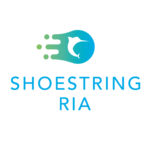

Choosing a Custodian
April 14, 2022 | RIA Resources

Intro
We’ve guided you through some of the most challenging decisions and work as a new RIA over the past few blogs, including your legal structure, accounting, and marketing. But perhaps the selection of an RIA custodian is the most consequential.
Whether you need one depends on your RIA’s activities. If you’re just interested in acting as a financial planning firm, then a custodian is unnecessary since you’re not directly managing portfolios. Solely registering as an RIA would be sufficient.
However, if you’re directly managing client assets, you’ll need a custodian. We’re going to assume that’s the case since many RIA’s perform some type of direct portfolio management. Since this is such an essential step for your RIA, we wanted to offer our recommendations on selecting the best custodian for your needs.
Don’t speed through this step as it is an important one. Do your research and take your time. We recommend focusing on three areas during your research:
- Support for small RIAs
- Their technology platform
- Their service
Support for Small Firms
While there is technically no minimum amount of assets required to legally start an RIA, if you want to work with one of the top three RIA custodians, you will have to meet their minimum asset requirements.
Even if you have $100 million in assets at your current firm, on day one when your independent RIA goes live as a regulated entity, you technically have zero in assets until you actually move your clients and their assets underneath your RIA.
Until your assets are under your name, pay attention to custodian minimums. For example, Schwab had a $20 million minimum for new RIA clients. Pershing recently dropped their asset minimum to $100 million.
You can also look at custodians who cater to small RIAs. These firms are sometimes referred to as “second-tier custodians.” This has nothing to do with quality but rather their size. They often offer services close to or equal in quality to the larger firms.
For example, Millennium Trust Company is an excellent option if your clients hold non-traditional assets. Others, like Shareholder Service Group, are built on top of a larger custodian’s service (in SSG’s case, Pershing), making it attractive to RIAs already familiar with the parent platform.
TradePMR and Trust Company of America have built their own technology to differentiate themselves from the competition (more on that later).
Regardless of these custodians you choose, most if not all firms we mentioned have low enough AUM requirements that most firms will qualify, and a few have no AUM requirements at all.
Technology
One of the advantages of choosing one of the smaller custodians is that the competition for your business is fierce. These firms are fighting over a small slice of the market, which forces them to innovate to stand out.
TradePMR offers Earnwise, a mobile version of its Fusion portal aimed at advisors looking for a way to manage their accounts through a smartphone or tablet. Another smaller custodian, Folio Institutional, differentiates themselves through their completely paperless system.
There are even custodian platforms like Apex Clearing, which serve as an API layer that other companies build services upon. While high-tech features might not be a must-have for all advisors, feel free to research the technology and functionality of any potential custodian.
Some custodian firms may have technologies or features that might work well with how you plan to work or the services you plan to provide. And in most cases, these platforms are built to be user friendly and helpful for any less tech-savvy users.
Custodian Services
As an independent RIA (and especially a new one), you’re going to be quite busy in these first few weeks and months. The last thing you need is more work, so you’ll also want to research the level of service any prospective custodian provides.
Regardless of the custodian you choose, we recommend you thoroughly research their offerings in the following areas:
- Trading support: The right custodian offers its advisor clients a full range of investment products, including equities, bonds, ETFs, mutual funds, and so on. Some, like Millennium, offer access to not traditional investments and in some cases, cryptocurrency. It’s critical to be future-minded here, as your client’s investment strategies will change over time.
- Compliance: You are responsible for staying compliant in the end, but the right custodian will help you develop highly compliant policies and practices. Typically these are offered through third parties that the custodian has relationships with.
- Technology consulting: A good custodian can walk you through the often complicated web of applications and services you might use and ensure that they’re properly integrated. Unless you’ve hired IT personnel, you’re going to need your custodian’s help to make it all work.
Summary
Choosing a custodian is one of the most important decisions you will make as a newly independent RIA. These tips above should help you select the best custodian for your firm’s needs. And once this is done, you’re ready to start managing your client’s accounts, and there are only a few other housekeeping duties to perform, which we’ll cover over the next few months.
The Shoestring RIA is a series of articles written and published by the BillFinTM team at Redi2 Technologies designed to help RIAs as they start out on their own. We recognize just how challenging it is to venture out and build a successful business. Our articles will be focused on helping these new businesses with a wide range of topics.
